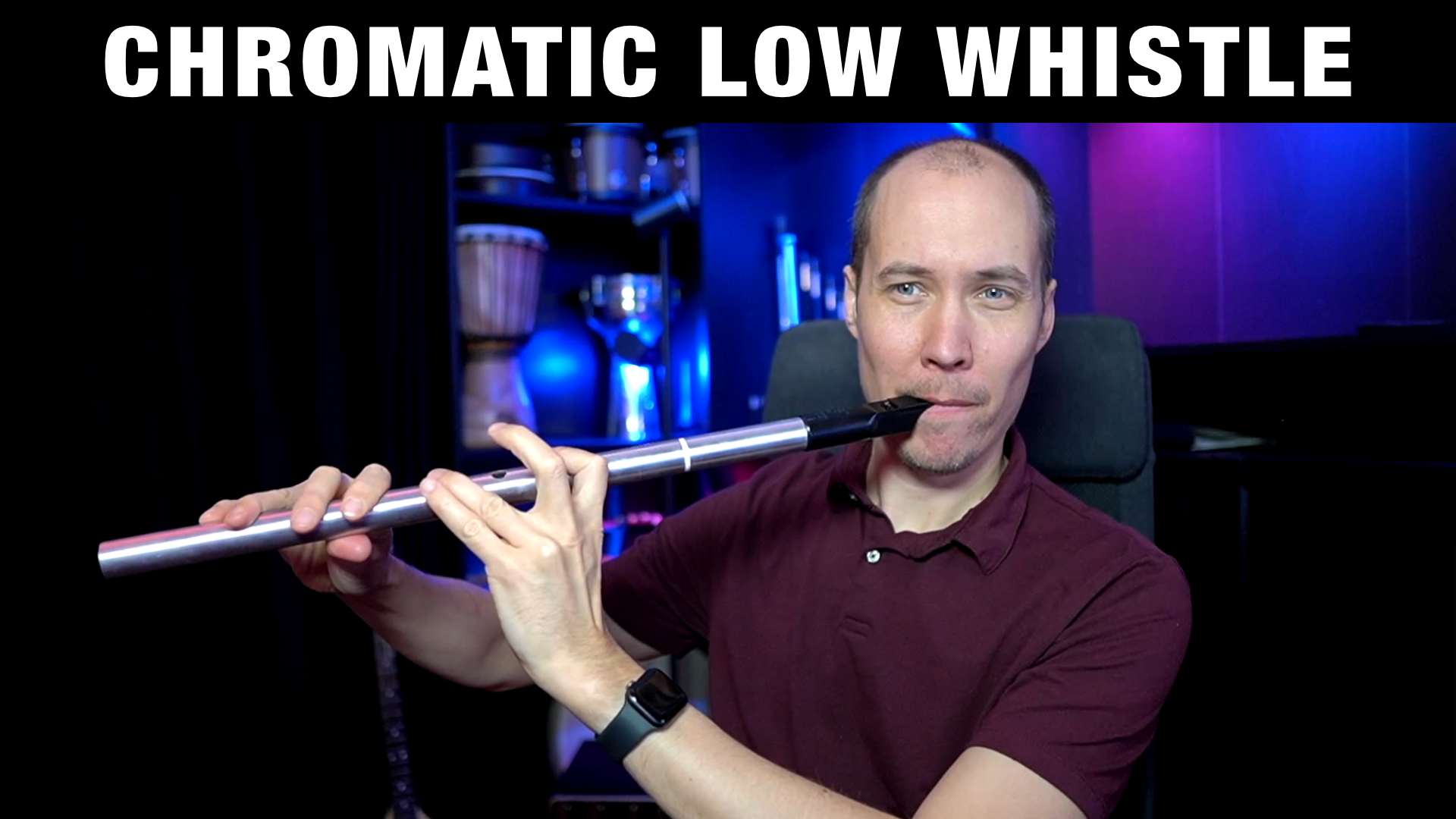 I love the sound, playability and expressive feel of the tin whistle as well as the low whistle.
I love the sound, playability and expressive feel of the tin whistle as well as the low whistle.
However, there is of course one main drawback, which is that tin whistles from low to high, are diatonic instruments. They are designed to play the notes of a specific key, with perhaps 1 or 2 extra notes from cross-fingerings.
This means you can not really play all 12 chromatic notes on a tin whistle or low whistle.
Can you get a Chromatic Low Whistle?
Yes you can actually, which is lovely because you can then play all 12 notes of music on one single instrument. There are 2 options:
1 – Convert a Standard Boehm Flute into a Low Whistle
By adding a custom made fipple head (low whistle mouth-piece) to a standard concert flute (C-flute, also called Boehm flute), you can play the fingerings like the flute, but get the sound and playability of the low whistle head-joint.
There are several versions on the market, but the one I got is called “fliphead”: check it out here.
2 – Get a Special Low Whistle Fingering System for Chromatic Notes
As far as I know there is only one maker available that have done this, which is MK Whistles. The advantage of this instrument is that you don’t get all the keys of a concert flute, and can still do the open hole expressive techniques like on a standard low whistle.
Check out the chromatic low whistle called mk Chameleon.
Can you get a Chromatic Tin Whistle?
Sadly no, as far as I know there are no makers that have made this possible. Now, if you want to play chromatic notes on a standard diatonic tin whistle, my best recommendation for you is to get a tin whistle with large tone holes.
The larger the tone holes, the easier it is to half-hole with precision, and without getting weak or fragile notes. But you should be aware that larger tone holes also means louder volume on the whistle.
Many people find this great for the first octave, which get stronger notes, but the 2nd octave will be very loud and require more air.
However, the best way to get true chromatic notes on a high soprano flute is to get a recorder instead of a tin whistle, as that instrument is designed in a way to allow all 12 chromatic notes with cross-fingerings.
